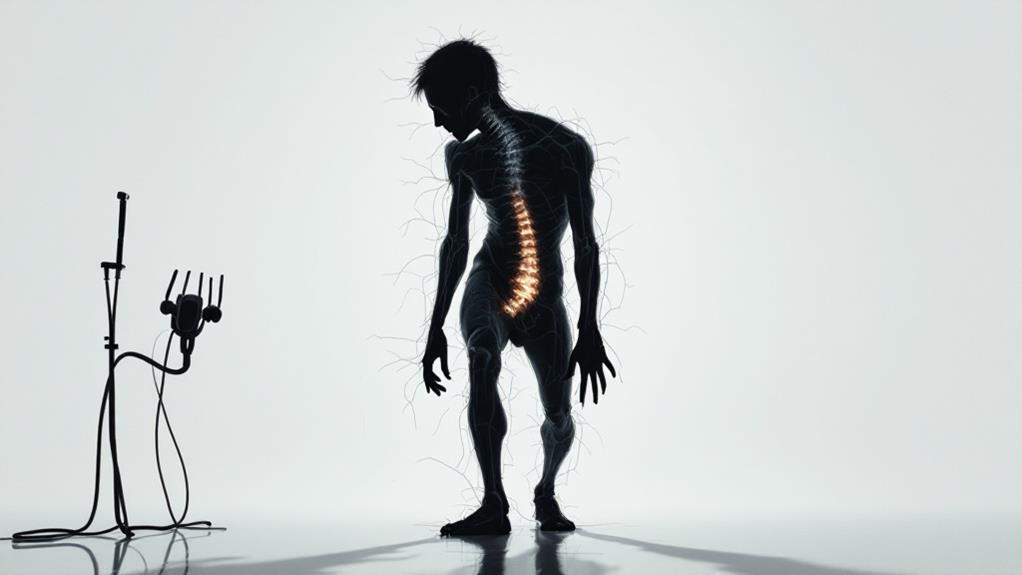Mysterious Diseases: Medical Mysteries That Baffled Science

You'll be amazed by the bizarre medical conditions that have stumped even the brightest scientific minds. From the Dancing Plague of 1518, where hundreds danced uncontrollably for days, to Morgellons Disease, with its mysterious skin fibers, these ailments defy easy explanation. Nodding Syndrome affects children in East Africa, while Kawasaki Disease threatens young hearts worldwide. Chronic Fatigue Syndrome and Foreign Accent Syndrome continue to baffle researchers. Stiff Person Syndrome and Stoneman Syndrome round out this list of perplexing disorders. Each case presents a unique challenge to our understanding of the human body and mind. Prepare to be intrigued by these medical enigmas.
The Dancing Plague
In the summer of 1518, a bizarre phenomenon gripped the city of Strasbourg, France. A woman began dancing in the streets, and within days, hundreds of others joined her in a frenzied, nonstop dance. This event, known as the Dancing Plague, is one of the most intriguing historical case studies of unexplained behavior patterns.
You might wonder how such a strange occurrence could happen. Witnesses reported that people danced for days on end, some until they collapsed from exhaustion or even died. Local authorities were baffled and initially tried to stop the dancing by hiring musicians, thinking the afflicted would eventually tire out. When that failed, they moved the dancers to a wooden stage, hoping to cure them.
Theories about the cause range from food poisoning to mass hysteria. Some researchers suggest ergot fungus, which can cause hallucinations, might have contaminated local grain supplies. Others propose that stress from recent famines and disease outbreaks led to a collective psychological breakdown. Despite centuries of investigation, the true cause of the Dancing Plague remains a mystery, leaving you to ponder the limits of our understanding of the human mind and body.
Morgellons Disease
While the Dancing Plague of 1518 remains shrouded in mystery, a modern-day condition has emerged that's equally perplexing: Morgellons Disease. You've probably never heard of it, but for those affected, it's a living nightmare. Sufferers report crawling sensations under their skin and mysterious fibers growing from their bodies.
The medical community is divided on Morgellons. Some doctors believe it's a real physical condition, while others argue it's a psychological disorder. The causes of Morgellons disease remain unknown, leaving patients frustrated and desperate for answers.
If you're experiencing symptoms, here's what you need to know:
- Morgellons isn't officially recognized by many medical institutions
- Symptoms include skin lesions, fatigue, and cognitive difficulties
- Fibers found in lesions are often identified as cellulose
- The condition is often associated with Lyme disease
Treatment for Morgellons disease is challenging due to its controversial nature. Some doctors prescribe antibiotics, while others focus on managing psychological symptoms. Cognitive behavioral therapy and antidepressants are sometimes used. As research continues, you're encouraged to work closely with healthcare providers to find the most effective treatment plan for your unique situation.
Nodding Syndrome

Nodding Syndrome baffles medical experts worldwide. This neurological condition primarily affects children in East Africa, causing seizures and characteristic head-nodding episodes. You'll find most cases in Uganda, South Sudan, and Tanzania, where it's wreaking havoc on local communities.
The syndrome's exact cause remains unknown, but researchers suspect a combination of genetic predisposition and environmental factors. Some theories link it to parasitic infections, malnutrition, or exposure to toxic chemicals from wartime munitions. As you explore deeper into this mystery, you'll uncover that affected children experience cognitive decline, stunted growth, and psychiatric problems.
Symptoms typically appear between ages 5 and 15, progressively worsening over time. You'll notice that patients often nod uncontrollably when presented with food or cold water. This peculiar response has given the syndrome its name. Despite extensive research, there's no cure yet. Treatment focuses on managing symptoms and preventing complications.
Scientists continue to investigate potential triggers and risk factors. You'll find that comprehending Nodding Syndrome is vital for developing effective interventions and improving the lives of affected children and their families in these vulnerable regions.
Kawasaki Disease
Kawasaki Disease frequently puzzles medical professionals with its sudden onset and potentially severe complications. You might be surprised to learn that this mysterious illness primarily affects young children, typically under the age of five. While the exact causes of Kawasaki Disease remain unknown, researchers suspect a combination of genetic factors and environmental triggers may play a role.
When it comes to symptoms of Kawasaki Disease, you'll want to watch out for:
- High fever lasting five or more days
- Rash on the trunk and groin
- Redness and swelling of hands and feet
- Bloodshot eyes
- Swollen lymph nodes in the neck
You'll notice that these symptoms can mimic other childhood illnesses, making diagnosis challenging. However, prompt recognition is vital, as Kawasaki Disease can lead to serious heart complications if left untreated. The good news is that with timely intervention, most children recover fully. Treatment typically involves intravenous immunoglobulin and aspirin to reduce inflammation and prevent blood clot formation. While Kawasaki Disease remains enigmatic, ongoing research continues to elucidate this perplexing condition, offering hope for better understanding and treatment in the future.
Chronic Fatigue Syndrome

Chronic Fatigue Syndrome (CFS) might be one of the most misunderstood conditions in modern medicine. You've probably heard of it, but its causes remain elusive. CFS is characterized by extreme fatigue that can't be explained by any underlying medical condition. It's not just feeling tired; it's a debilitating exhaustion that doesn't improve with rest and can greatly impact your daily life.
Research suggests that CFS might be triggered by a combination of factors, including gut microbiome disruptions and post-viral autoimmune responses. You might experience a range of symptoms beyond fatigue, such as muscle pain, cognitive difficulties, and unrefreshing sleep. Diagnosis is challenging, as there's no single test to confirm CFS. Instead, doctors rely on a process of elimination and a specific set of criteria.
Treatment for CFS is primarily focused on symptom management. You might find relief through a combination of medications, lifestyle changes, and therapies personalized to your specific symptoms. While there's no cure yet, ongoing research is shedding light on potential causes and treatments. If you're experiencing persistent, unexplained fatigue, it's essential to consult with a healthcare professional for proper evaluation and support.
Foreign Accent Syndrome
While chronic fatigue syndrome affects your energy levels, another rare condition can dramatically alter how you sound. Foreign Accent Syndrome (FAS) is a perplexing disorder where you suddenly speak with an accent that's not your own. It's as if you've adopted the speech patterns of a different country or region overnight.
FAS typically occurs after a neurological event, such as a stroke or head injury. However, foreign accent syndrome triggers can also include:
- Migraines
- Multiple sclerosis
- Developmental issues
- Psychological trauma
You might wake up one day sounding Irish, French, or even Russian, despite never having lived in these countries. A foreign accent syndrome diagnosis involves an extensive evaluation by neurologists, speech therapists, and psychologists. They'll assess your speech patterns, brain function, and medical history to rule out other conditions.
While FAS is extremely rare, with only about 100 reported cases worldwide, it can profoundly impact your life. You may face confusion, frustration, and even social isolation as others struggle to understand your sudden accent change. Treatment often focuses on speech therapy and addressing the underlying neurological cause, if identified.
Stiff Person Syndrome

Stiff Person Syndrome (SPS) is an exceptionally rare neurological disorder that causes your muscles to stiffen and spasm uncontrollably. This rare autoimmune disorder affects only about one in a million people, making it a challenging condition for doctors to diagnose and treat.
If you're suffering from SPS, you'll experience progressive muscle rigidity and spasms, primarily in your trunk and limbs. These symptoms can be so severe that they impair your ability to walk or perform daily tasks. You might also develop an exaggerated startle response, where sudden noises or touch trigger violent muscle spasms.
The exact cause of SPS remains unknown, but researchers believe it's related to an autoimmune response affecting the central nervous system. Your body mistakenly attacks proteins involved in muscle control, leading to the characteristic muscle rigidity and spasms.
Treatment for SPS typically involves a combination of medications to manage symptoms and immunotherapy to address the underlying autoimmune dysfunction. While there's no cure, proper management can help improve your quality of life and reduce the frequency and severity of muscle spasms.
Stoneman Syndrome
Deep within the domain of rare genetic disorders lies Stoneman Syndrome, also known as Fibrodysplasia Ossificans Progressiva (FOP). This rare genetic condition affects roughly one in two million people worldwide, gradually turning connective tissues into bone. You'll find that patients with FOP experience an unusual symptom presentation, where their bodies slowly develop a second skeleton outside their original one.
The progression of Stoneman Syndrome is both unpredictable and irreversible. You might notice these key characteristics:
- Malformed big toes at birth
- Soft tissue swellings that harden into bone
- Limited mobility as joints become locked
- Respiratory issues due to chest wall restriction
As you explore deeper into this mysterious disease, you'll uncover that even minor injuries can trigger rapid bone formation. Surgeries to remove excess bone often backfire, stimulating more growth. While there's currently no cure for FOP, researchers are working tirelessly to understand its mechanisms and develop potential treatments. You'll find that living with Stoneman Syndrome requires incredible resilience, as patients face the challenge of a body slowly imprisoning itself in bone.



